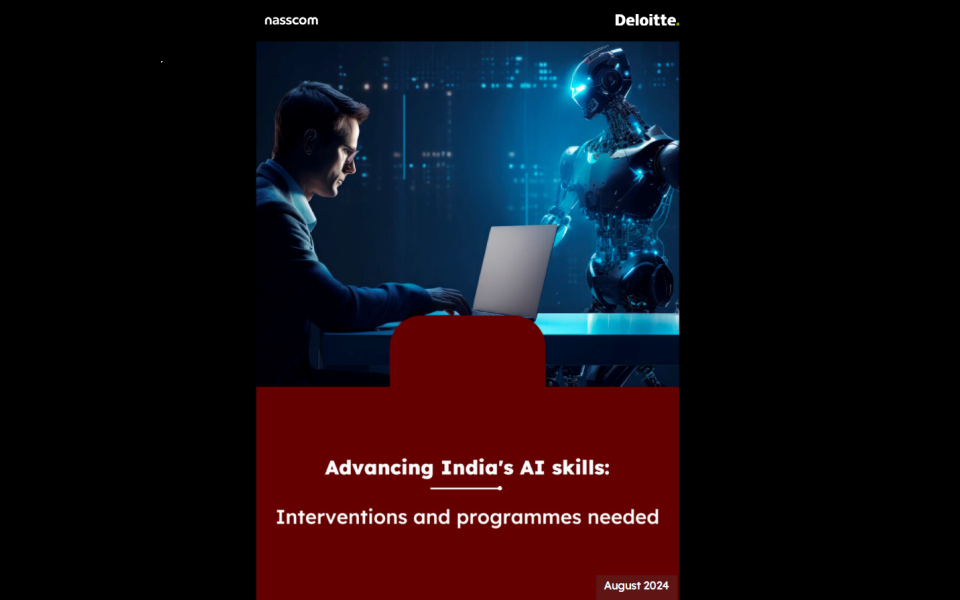Mysteries of the universe have always fascinated the thinking race. From natural laws, which sustain life on earth, to its creations which acts as an impetus to derive meaning out of this life, humans have strived to sustain constancy or growth. Natural systems are energy consuming. It consumes energy for it to stay as is. For growth, it requires energy far greater than the energy it utilized to maintain the equilibrium. Lewis Carroll described it well for the Red Queen in Through the Looking Glass – “Now, here, you see, it takes all the running you can do, to keep in the same place.” Philosophers, scientists, biologists etc. have come and gone emphasizing the same to constantly adapt, evolve, and proliferate, or else perish.
When life formed on earth - humans, to survive, learnt the art to create the tools to hunt and gather for food. As civilizations matured, they developed the means to save that food and acquired new ways to accumulate energy, such as by farming, ranching etc. As they started to amass more energy, they started to trade that food for other commodities. The creation of wheel, light, telegraph, telephone etc. enabled humans to accumulate more energy and aspire to develop higher order skills, which is to think and create. This process also triggered formation of groups, classes, and society based on economic standing, region, profession, color, etc. They created solutions which performed to maximum capability and capacity with the resources at hand, to tackle the problems present during the time and to stabilize the future for the next generation. This constant push to have abundant energy supply created a more complex order in the system, which also saved the humans from its natural inclination to fall into a state of disorder.
There was also another set of humans who found it difficult to adapt to the changing world. They found themselves in scenarios of energy deficit, to stay relevant in their current positions and to survive. They would rather perish in the totems of the prejudices and the fear of the unknown, than to amass energy to even stay constant. As problems became more complex and mature, it led them to become food for the change. We are today in the age of technology, where we are challenged daily with problems which require even more complex cognitive skills. We are constantly being thrown at the precipice to decide yet again – to become energy blocks to drive change or become food for the churning tide of change.
Some notes from history - persevere or perish?

The failure to adapt has been the downfall of many civilizations throughout the human existence. A civilization or social collapse can be attributed to many factors - natural catastrophe, war, pestilence, famine, population decline, high mortality, over population, resource depletion, Malthusian catastrophe, mass migration, severe inequity, exposed corruption, environmental degradation, economic hardship, intergroup violence, etc. but the underlying fact remains the same, the inability to amend the ways of living and the failure of the problem-solving institutions.
Social scientists have provided multiple proofs of many ancient civilizations which vanished mysteriously from the face of Earth. The decline of the Mayan civilization, an area which covered the present day south American countries at the end of the classic period, popular for their calendar making, astronomy, and hieroglyphic writing, is known to have been theoretically caused by drought, deforestation, and loss of soil fertility. The populace suddenly deposed its kings, abandoned the cities, and ceased to adapt with technological innovation.
The decline of Western Roman civilization is also attributed in part to decaying agricultural output. The available per capita energy dropped as population increased and the Roman agricultural output declined. They solved this problem by appropriating their energy surplus such as metals, grains, and other materials of value by conquering their neighbours. However, the cost of maintaining communication, government, garrisons etc. grew as the empire flourished. Eventually, this cost increased so much that acquisition of more territory could not solve any new challenges such as barbarian invasions and crop failures.
Similarly, research suggests Harappan civilization or the Indus Valley Civilization, one of the pioneer civilizations of the Bronze Age, declined in about 1300 BCE because of climate change, drought, earthquake, foreign invasion, outbreak of infectious disease, and mass migration. Likewise, severe natural calamities such as volcanic eruptions and subsequent conquest by Mycenaean Greeks has been attributed to the fall of Minoan civilization. However, what about the countless civilizations which survived or rebuilt themselves from military defeats, wars, invasions and occupations, earthquakes, floods, and famines? What did they do differently?
It is difficult to comprehend how a thriving community which would have been through countless natural calamities, ceases to exist after yet another endemic. Many theories point towards the failure of social/ economic/ governmental structures to respond to technological innovation resulting in the downfall of a major civilization.
The anthropologist Joseph Tainter, in his book The Collapse of Complex Societies (1988), theorized that societies move towards the path of collapse when they exhaust their own design, meaning their investment in solving the social complexity, such as in education, technological innovation, and ‘energy subsidy’ reaches a point of diminishing marginal return.
He explained this theory using the example of the demise of Chaco Canyon Pueblo people (860 – 1140) from the Chaco region of the Northwest New Mexico.
It was a complex agricultural society, with its signature achievement being the construction of “great houses” made from timber. He speculates that there was a complex relationship between the administrative center in the Chaco Canyon and the “outlier” communities at varying elevations. The communities were able to coordinate resource exchanges which enabled the survival of all the communities. The success of the Chaco community saw the rise in the population. The diverse community and resource exchange which allowed the system to function was reduced as “proportionately less could be distributed to each community experiencing a deficit.” This led to the outlier community being dropped from the network and towns being abandoned.

Joseph Tainter also argues that complexity provides an explanation to every instance of collapse. We proceed with our lives, solving problems as they arise, creating an even more complex system around us. Complexity builds incrementally, makes the system more brittle, and it starts to fracture, with a “rapid, significant loss of an established level of socio-political complexity”, meaning that nations fracture on the lines of governance, social cohesion, economic wellbeing, health and literacy index, technological innovation, etc.
Tainter’s theory is supported by the historian Arnold J. Toynbee. He emphasizes that the success of any civilization depends on its ability to solve problems and its decline on its inability. Toynbee highlights that civilizations are formed when a “creative minority” effectively resolves the trials posed by social, political, and physical environment. Creative minority provides ideas and solutions to address the challenges faced by a society, which are then copied by a majority. This essentially means that the two steps to solve a challenge is to first generate the ideas to solve a problem and then adopt those ideas at a macro level, if any one of these steps stops to operate then the civilization breaks down.
The Second Law
The second law of thermodynamics states that there is a natural tendency of any isolated system to degenerate into a more disordered state, and that as energy is transferred or transformed, more and more of it is wasted. The second law it is said is the foundation of our understanding of the universe and our place in it. It defines the fate of the universe and the ultimate purpose of human striving – “to deploy energy and knowledge to fight back the tide of entropy and carve out refuges of beneficial order.”
So just imagine, that the nature of jobs is changing, new technologies such as AI, Big Data Analytics, Cloud Computing etc. are being utilized to deliver solutions to the existing problems.

Now if you take this as an isolated system and don’t apply energy to acquire new skills or adopt new technologies, then the system will automatically shift towards a more disordered state - for example – being a victim of evolution or acquisition by a larger firm adapting rapidly, not having a relevant job, not being relevant in the current job role or to the organization, not being able to contribute to the national or world economy, viral spread of diseases and pandemics, rise in conflict and violence, rise of authoritarianism, increasing distrust in democracy and the general decline in individual and social wellbeing – leading to what we call destitution.
India – the past years and what is next?
India is a vibrant multi-cultural nation. Representing numerous linguistic and geographical communities, an agricultural and service driven economy, a democracy supporting the precarious thread of various belief system and groupings, a significantly young country carrying the aspiration of the youth, and a country which has always been pitched to be on the path of greatness.
However, greatness does not come easy, when met with hindrances of even greater severity on every metric of growth – governance, economy, education, and health etc.

India’s unemployment rate crept up to 7-8% in 2021 - 22, highest since 1991. Data also shows that urban jobs fell by 0.9 million, salaried jobs by 6.8 million, and number of entrepreneurs fell by 3.5 million. The parliament also reported a 24% rise in suicides due to unemployment and bankruptcy, in India, in 2020. These metrics show a significant stress on all the growth-related components and can have a spiralling effect on multiple other distressful occurrences in India, at an individual, social, and socio-political level. For example, youth unemployment causes significant stress on per capita household income leading to homelessness, underemployment i.e., employment below their skill level, participating in anti-social activities, drug abuse, mental stress and illness, civil unrest, etc.
Multiple factors are being attributed to the above – the global pandemic causing global shutdown, changing nature of jobs, ever-widening employment gap giving rise to mass unemployment due to skill mismatch in addition to the unavailability of jobs, etc. However, are these factors going to govern the path for India in the next few years? If energy is not put in the direction of backwards change, where will India be?
Shifting the focus towards the available opportunities that have the potential to move the graph towards a positive slope, can be the only way forward for policy makers and industry alike. NASSCOM’s recent India’s Tech Industry Talent Demand – Supply analysis, 2022, reports India’s tech talent demand supply gap at 21.1% is the lowest among top tech countries such as USA, China, and UK, with a high reskillability index and a large share of adjacent tech talent. Tech Industry’s Digital Tech talent is growing 5x faster than core tech talent accounting for 30-32% of the total Technology talent. The tech Industry shows a demand growing at 11-13% CAGR with total talent demand pitched at 9.3 -9.6 million by 2026. The total projected available talent supply will be around 7.5-7.8 million, which will create a gap of 1.4-1.9 million jobs by 2026.
Additionally, India is ranked 2nd globally, with 2.14 million Annual STEM graduate supply. However, only 35% of them are deemed employable owing to a gap between market demand and talent supply. This also shows that interventions to fix this problem can significantly improve the supply side.
There is a need to focus on the available opportunities for India, to utilize this to our advantage. Decluttering and reorganization often help in relooking at how the system can be made growth driven to break the cycle of diminishing marginal return. Joseph Tainter does highlight that innovation is a way out of the dilemma of increasing complexity. New inputs to the economic system, energy subsidy or technological innovation, will often have the potential to temporarily raise the productivity.
Typically, each one of us always has a choice to choose between the option of being energy blocks of change or become the food for change. There will always be a lot of resistance to find the courage to change, unlearn, relearn, and then apply, because if we don’t then what options do we have?
Written by Abhishek Maggo – IT Lead, SSC NASSCOM and Hera Khan – Co – Lead, Strategic Initiatives, FutureSkills




































